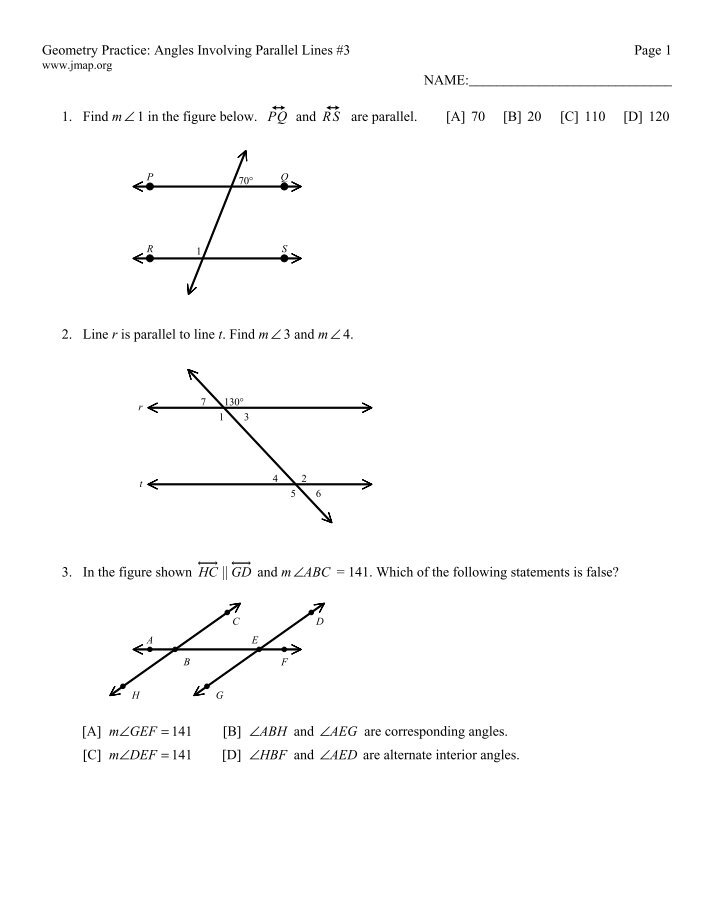

We spend a lot of time researching and compiling the information on this site. Corresponding Angles: It should be noted that the pair of corresponding angles are equal in measure. Given below are the pairs of angles formed by the two parallel lines L1 and L2. Each angle has been labeled using an alphabet. After completing it your children will be ready to review the lesson on finding missing angles. Eight separate angles have been formed by the two parallel lines and a transversal. Have your children try the worksheet below that has questions on angle relationships. Try the 180° In a Triangle Experiment which is a 2-page (be careful with the scissors) activity to demonstrate that the sum of the interior angles in a triangle is 180°. The sum of the interior angles in a quadrilateral is 360°. The sum of the interior angles in a triangle is 180°. Since the two lines are parallel, the alternate angles shown above are equal. Notice how the interior angles are in between the two parallel lines and the exterior angles are to the outside. Since the two lines are parallel, the corresponding angles are equal.Īs Shown below, there are also two pairs of alternate interior angles and two pairs of alternate exterior angles. Looking at the two intersections, the angles that are in the same relative (or corresponding) positions are called corresponding angles. Each of these angles has a corresponding angle. The example below shows two parallel lines and a transversal (a line that cross two or more other lines).

Opposite angles are sometimes called vertical angles or vertically opposite angles. Each angle is opposite to another and form a pair of what are called opposite angles. When to lines intersect they create four angles. Note that, as with complementary angles, they do not need to be adjacent to each other. The two angles shown above are supplementary to each other. Supplementary Angles add together to make 180° Supplementary (add up to 180 degrees) Co-exterior angles on parallels are. If they are adjacent then they form a right angle. A pair of angles that lie outside of parallel lines and on the same side of a transversal. Notice that the angles do not have to be adjacent to be complementary. The examples above all show two angles that are complementary. Complementary AnglesĬomplementary Angles are those which add together to make 90°. Transversal – a line that intersects two or more other lines.Īdjacent Angles – angles that share a common side and that have a common vertex. Parallel Lines – lines that are equidistant from each other and never intersect. Discuss these as you go and, when you are ready, try the angle relationships worksheet. Sum of Interior Angles in Triangles and in Quadrilaterals.Īfter reviewing the lessons above you will be ready to read through the information below on angles and their relationships with your children.Corresponding and Alternate Angles, and.

This lesson will provide information and guidance on: Before working through the information below you may wish to review this lesson on measuring angles as well as taking a look at the lesson on adding and subtracting angles.


 0 kommentar(er)
0 kommentar(er)
